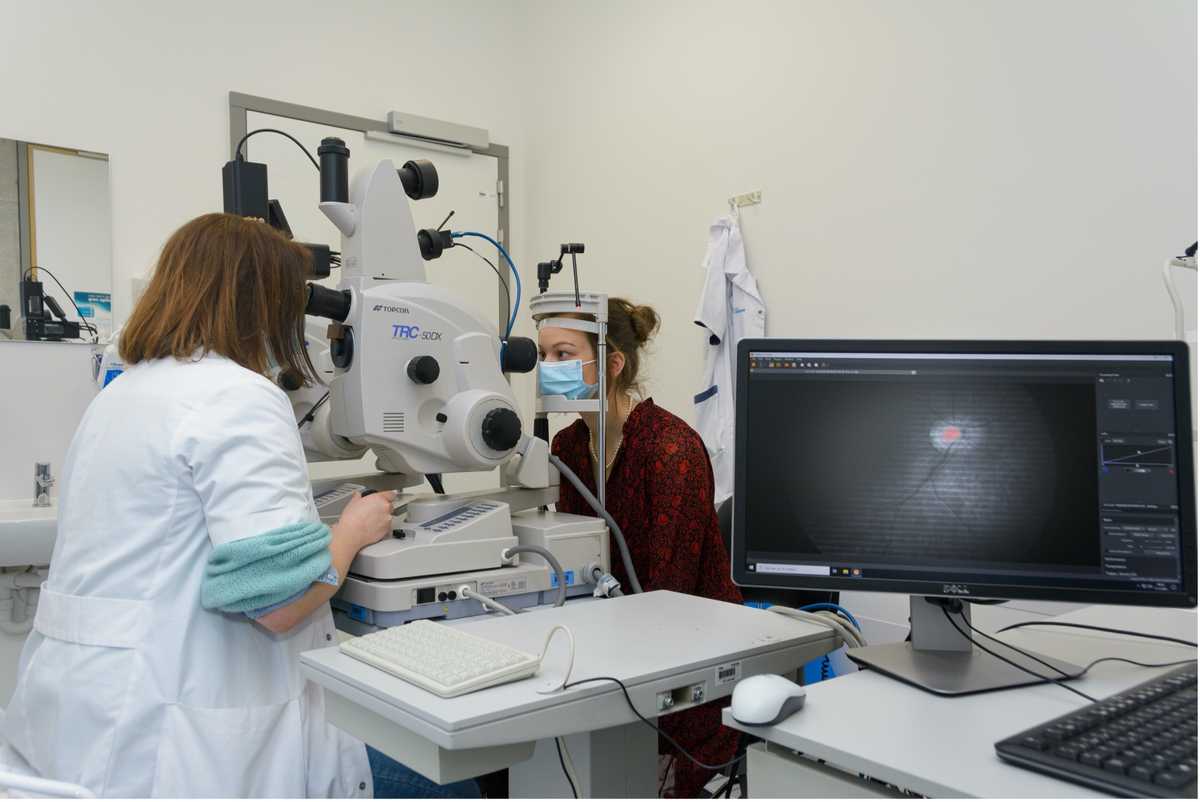
Hyperspectral Imaging, OCT Team to Detect Early Biomarkers of Alzheimer’s Disease
A team of scientists and engineers from Katholieke Universiteit (KU) Leuven, Universitair Ziekenhuis (UZ) Leuven, and the research organization VITO, collaborating with the international research and development group imec, used imec’s hyperspectral snapshot camera, SNAPSCAN, to collect information from 16 spectral bands (460 to 620 nm, 10-nm bandwidth) in a single capture. The potential for retinal imaging to serve as a tool for the early diagnosis of Alzheimer’s disease is the focus of the team’s research, which is specifically exploring retinal imaging techniques to quantify the accumulation of amyloid-beta protein in the brain.
Using SNAPSCAN, the team combined hyperspectral retinal imaging and OCT to create an instrument with the capabilities of both techniques. Researchers mounted the hyperspectral camera on top of a standard fundus camera.
In addition to information from 16 spectral bands, the system was able to detect the wavelength signature of each protein.
With help from imec, the researchers set up a simultaneous operation of the fundus and SNAPSCAN and adapted the image processing software and correction algorithms to achieve good image quality and a large field of view. Next, VITO engineers used machine learning techniques to set up and train a classification model that could differentiate between Alzheimer’s patients and healthy individuals.
In a memory clinic setting, patients with a diagnosis of clinically probable Alzheimer’s disease or biomarker-proven Alzheimer’s disease and controls underwent noninvasive retinal imaging with the hyperspectral camera. The individuals were also imaged using OCT to assess retinal nerve fiber layer thickness. The model demonstrated 75% to 80% certainty when it used the hyperspectral and OCT measurements to differentiate between Alzheimer’s patients and controls, Patrick De Boever, former project manager at the VITO Health Unit, said.

Setup of combined hyperspectral and fundus camera at at the lab of professor Ingeborg Stalmans, head of the Research Group Ophthalmology (RGO) at KU Leuven. Courtesy of KU Leuven and imec.
“We quantified the Aβ protein accumulation in the retina with the help of hyperspectral imaging and studied the thinning of the retinal nerve fiber layer — a sign of neurodegeneration — with optical coherence tomography,” Sophie Lemmens, M.D., said. “By combining these measurements, we could discriminate the two groups.” Alzheimer’s is characterized by the buildup of Aβ and tau proteins in the brain.
“These are proteins that also appear in healthy brains,” researcher Lies De Groef and professor Lieve Moons said. “However, because of cell aging and other disease-causing mechanisms we do not yet fully understand, production and clearing processes get out of balance and protein accumulation occurs. That is one of the hypotheses to explain for the so-called Aβ plaque and tau tangle formation in Alzheimer’s disease brains.”
The compact camera from imec enabled fast image acquisition, Lemmens said. “For reliable results and to avoid motion artefacts in the image, it is important that the patient doesn’t blink and keeps his eyes in a fixed position. Since the snapshot camera only needs a few milliseconds to collect the images, it is feasible to use with patients. Also, because only light from the visible spectrum is needed, it is safe to use.”
The instrument combining hyperspectral retinal imaging with OCT could help doctors diagnose Alzheimer’s disease in the pre-symptomatic phase of the disease, when the chances of effective treatments are thought to be the highest.
“Experts believe that drugs fail because they are administered too late in the disease’s progression, when too many neurons have already died,” Lemmens said. “We believe that if we could diagnose people 10 to 20 years before developing symptoms, the drugs could be much more effective.” She said that the system will initially be used to select people for clinical trials who are in a very early stage of the disease and to perform patient stratification. The team plans to develop better hardware and software to optimize the fundus camera.
A test based on the model could come to market fairly soon, because the equipment is almost fully developed and has proven to be safe to use with patients. According to the researchers, several companies worldwide are taking first steps to commercialize the technology, including MONA, a spinoff of the Health Unit of VITO.
The research was published in Alzheimer’s Research & Therapy (www.doi.org/10.1186/s13195-020-00715-1).
/Buyers_Guide/Imec/c22187